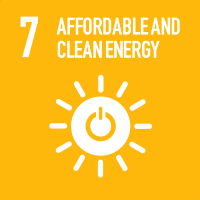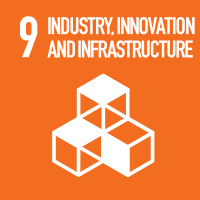Studying at the University of Verona
Here you can find information on the organisational aspects of the Programme, lecture timetables, learning activities and useful contact details for your time at the University, from enrolment to graduation.
Type D and Type F activities
This information is intended exclusively for students already enrolled in this course.If you are a new student interested in enrolling, you can find information about the course of study on the course page:
Laurea interateneo in Ingegneria dei sistemi medicali per la persona - Enrollment from 2025/2026Students can choose the type D training activities among a catalogue of courses, while type F activities provide additional knowledge useful for entering the job market (internships, transferable skills, project works, etc.). According to the Degree Programme description and regulation, some activities can be chosen and added autonomously by the students to the academic record, whereas others must be approved by a committee to verify their coherence with the study plan. Type D or F training activities can be covered by the following activities:
1. Courses offered at the University of Verona:
This includes the course listed below and/or in the Course Catalogue (which can be filtered by language using advanced search)
Procedure for adding courses to the academic record: Ig the course is among those listed below or in the Catalogue, the student can add it independently when the study plan is open for modifications; otherwise, the student must request approval from the Student Office by sending the form to carriere.scienze@ateneo.univr.it during the specified periods.
Starting from students enrolled in the Academic Year 2022/2023, courses offered in the 2nd and 3rd years of the study plan can be autonomously added to the academic record.
There is no need to submit the request to add the following courses to the academic record to the “Commissione Pratiche Studenti”: Database and Web (BSc in Bioinformatics); General Biology (BSc in Bionformatics); Molecular Biology (BSc in Bioinformatics); Probaility and Statistics (BSc in Computer Science); Programming and Network Security (BSc in Computer Science).
2. CLA Language Certification or Equivalence
Beside to to those already required by the study plan, the following language certifications can be added as additional training activities for students enrolled in the academic years 2021/2022 and 2022/2023:
English language: 3 CFU will be granted for each level of proficiency above the level required by the study program (if not already granted in the previous degree programme).
Other languages and Italian for foreigners: 3 CFU will be granted for each level of proficiency starting from A2 (if not already granted in the previous degree programme).
These CFU will be granted as type D activities and up to a 3 CFU in total. In case the language certification is dated prior to 27/10/2023 (date of the vote of the Teaching Board of Information Engineering) the maximum CFU to be granted can be extended to 6, as for previous regulation. Additional credits for language knowledge can only be granted if consistent with the student's educational project and adequately justified.
For students enrolled in the academic year 2023/2024, credits for language certifications beyond those specified in the teaching plan will be recorded as extra type D CFU.
Procedure for adding the relevant academic record: Request the certificate or equivalence certificate to the CLA and send it to the Student Administration Office via email (carriere.scienze@ateneo.univr.it) for the exam to be recorded.
3. Transferable Skills
Discover the training paths promoted by TALC – Teaching and Learning Center of the University, intended for students regularly enrolled in the Academic Year offering the modules https://talc.univr.it/en/competenze-trasversali
Procedure for adding the relevant academic record: the modules will not be added to the study plan, but CFU will be granted after obtaining the Open Badge. The procedure may require a certain amount of time to reach a conclusion.
4. Contamination Lab
The Contamination Lab Verona (CLab Verona) is an experiential program with modules dedicated to innovation and corporate culture that offers the opportunity to work in teams with students from all degree programs to solve challenges posed by companies and organizations. The program allows receiving 6 type D or F CFU. Discover the challenges: https://www.univr.it/en/clabverona.
NOTE: To be admitted to any educational activity, including electives, students must be enrolled in the specific Academic Year of the course being offered. Therefore, it is recommended that those who foresee to graduate December and April sessions do NOT undertake extracurricular activities for the new Academic Year in which they are not enrolled, as these graduation sessions are valid for the previous Academic Year. Therefore, modules carried out in an Academic Year when the students is not enrolled with the University of Verona, the relevant CFU will not be recorded.
5. Internship/Stage and other activities
The student must complete a 7 CFU internship and attend a 2 CFU module on “Medical Systems Seminars”.
Annually, the Internship Committee (tirocini-ismp@ateneo.univr.it) proposes a list of internship projects from which students can choose in line with their study plan and interests. The list can be complemented, after the approval of the Internship Committee, with proposals made by students who independently look for internship opportunities within the departments of the universities involved in the Degree programme, or within external organizations/companies. The management of the internship process is detailed in the Vademecum delle Attività di Tirocinio. Here is the relevant information page (with a link to Moodle) and here the general information on how to activate an internship.
Please note that for internships starting from October 1, 2024 with external partners/company, extra hours can lead to extra type D CFU.
| years | Modules | TAF | Teacher |
|---|---|---|---|
| 2° 3° | Fundamentals of Movement Analysis | D |
Iacopo Tamellin
(Coordinator)
|
| 2° 3° | Introduction to quantum mechanics for quantum computing | D |
Claudia Daffara
(Coordinator)
|
| 2° 3° | Python programming language [English edition] | D |
Carlo Combi
(Coordinator)
|
| 2° 3° | BEYOND ARDUINO: FROM PROTOTYPE TO PRODUCT WITH STM MICROCONTROLLER | D |
Franco Fummi
(Coordinator)
|
| 2° 3° | APP REACT PLANNING | D |
Graziano Pravadelli
(Coordinator)
|
| 2° 3° | HW components design on FPGA | D |
Franco Fummi
(Coordinator)
|
| years | Modules | TAF | Teacher |
|---|---|---|---|
| 2° 3° | LaTeX Language | D |
Enrico Gregorio
(Coordinator)
|
| 2° 3° | Python programming language [Edizione in italiano] | D |
Carlo Combi
(Coordinator)
|
| 2° 3° | Rapid prototyping on Arduino | D |
Franco Fummi
(Coordinator)
|
| 2° 3° | Tools for development of applications of virtual reality and mixed | D |
Andrea Giachetti
(Coordinator)
|
| 2° 3° | Development and life cycle of software of artificial intelligence software | D |
Marco Cristani
(Coordinator)
|
| 2° 3° | Protection of intangible assets (SW and invention)between industrial law and copyright | D |
Mila Dalla Preda
(Coordinator)
|
| years | Modules | TAF | Teacher |
|---|---|---|---|
| 1° | Subject requirements: physics | D |
Elisa Artegiani
(Coordinator)
|
| 1° | Subject requirements: mathematics | D |
Franco Zivcovich
(Coordinator)
|
BEYOND ARDUINO: FROM PROTOTYPE TO PRODUCT WITH STM MICROCONTROLLER (2024/2025)
Teaching code
4S013528
Teacher
Coordinator
Credits
3
Also offered in courses:
- BEYOND ARDUINO: FROM PROTOTYPE TO PRODUCT WITH STM MICROCONTROLLER of the course Bachelor's degree in Bioinformatics
- BEYOND ARDUINO: FROM PROTOTYPE TO PRODUCT WITH STM MICROCONTROLLER of the course Bachelor's degree in Computer Science
- BEYOND ARDUINO: FROM PROTOTYPE TO PRODUCT WITH STM MICROCONTROLLER of the course Master's degree in Computer Science and Engineering
- BEYOND ARDUINO: FROM PROTOTYPE TO PRODUCT WITH STM MICROCONTROLLER of the course Master's degree in Medical Bioinformatics
- BEYOND ARDUINO: FROM PROTOTYPE TO PRODUCT WITH STM MICROCONTROLLER of the course Master's degree in Computer Engineering for Robotics and Smart Industry
- BEYOND ARDUINO: FROM PROTOTYPE TO PRODUCT WITH STM MICROCONTROLLER of the course Master's Degree in in Computer Engineering for Intelligent Systems
- BEYOND ARDUINO: FROM PROTOTYPE TO PRODUCT WITH STM MICROCONTROLLER of the course Master's degree in Artificial intelligence
Language
Italian
Scientific Disciplinary Sector (SSD)
NN - -
Period
Semester 1 dal Oct 1, 2024 al Jan 31, 2025.
Erasmus students
Not available
Courses Single
Not Authorized
Learning objectives
This 8-hour course was designed to respond to the growing demand for skills in the field of firmware development on microcontrollers capable of communicating with the BLE protocol using the FreeRTOS Operating System in the IoT context. The main goal is to provide a solid foundation of knowledge and skills to enable developers to create firmware for IoT devices using these technologies. All activities will be exemplified on an STM architecture.
Prerequisites and basic notions
Reti Logiche e Calcolatori Elletronici, o
Architettura degli Elaboratori o di Computer.
Program
* Session 1: Introduction to BLE and IoT (1.5 hours) Overview of Bluetooth Low Energy (BLE) a. Differences between Classic Bluetooth and BLE b. Applications and benefits of BLE in IoT IoT Basic Concepts a. Definition and Key Features of IoT b. Role of BLE in IoT c. Common Use Cases in IoT Architecture and Operation of BLE in IoT a. Roles of Central and Edge Devices b. Concepts of Generic Attribute Profile (GATT) and Services c. BLE Features, Descriptors, and Profiles
* Session 2: Introduction to Firmware on STM and Espressif Microcontrollers (1.5 hours) 4. Introduction to STM and ESP Microcontrollers a. Key Features of STM and ESP Microcontrollers b. Advantages and Disadvantages of Each Platform Development Environments and Tools a. Overview of Development Environments for STM/ESP Microcontrollers b. Setting Up the Development Environment and Toolchain Introduction to FreeRTOS a. Real-time Operating System Basics b. Benefits and Features of FreeRTOS
* Session 3: Developing Firmware on ST/ESP Microcontrollers with BLE and FreeRTOS (3 hours) 7. Configuring the Microcontroller to Use BLE a. Selecting the Right STM/ESP Microcontroller b. Implementing BLE Services, Features, and Profiles c. Publishing Data Using BLE Introduction to Programming with FreeRTOS a. Creating Tasks and Managing Concurrency b. Managing Events and Message Queues c. Using Semaphores and Mutexes for Synchronization Developing Firmware to Manage Central Devices a. Scanning and Discovering Edge Devices b. Connecting to an Edge Device c. Reading and Writing Features
* Session 4: Practical Examples and Best Practices for IoT Firmware Development with BLE and FreeRTOS (2 hours) 10. Project Example: Implementing an IoT System with Firmware on STM/ESP Microcontroller Using BLE and FreeRTOS a. Configuring edge devices and features b. Implementing firmware to handle IoT data and communications Best practices for developing IoT firmware with BLE and FreeRTOS a. Error and exception handling b. Security and privacy considerations in IoT c. Optimizing performance and power consumption Resources and insights on IoT with BLE, FreeRTOS, and STM/ESP microcontrollers a. Documentation and support resources b. Online communities and discussion forums
Didactic methods
Presentation of theoretical concepts in 8 hours of frontal teaching and subsequent creation of a project.
Learning assessment procedures
The exam consists of a project to be carried out in groups or individually.
Evaluation criteria
To pass the exam, students must demonstrate that they can correctly apply the concepts addressed during the course. The exam will consist of a project, which may be chosen from a set of proposed projects or proposed by the student (to be agreed upon with the teacher).
Criteria for the composition of the final grade
The final grade is calculated taking into account the quality of the project carried out.
Exam language
Italiano


